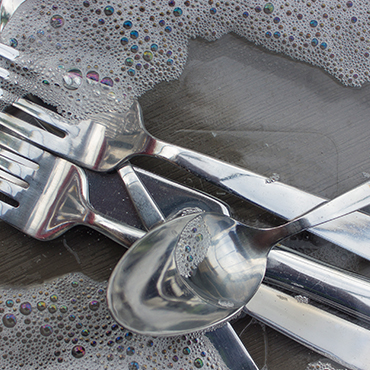Importance of Presoaks
With the national average to wash a rack of dishes at $0.60 and rising, it is important to practice one pass warewashing. One of the best ways to do this is by making sure the use of a presoak is implemented.
Flatware gathers food soils that can be stubborn to remove and frequently dry onto the flatware. This makes it difficult for the dishmachine to remove with just one wash. That is why we need a presoak to loosen and remove soils that have accumulated on flatware prior to going into the dishmachine. Using a presoak will also help maintain the shininess of flatware and reduce spots and streaks by improving the sheeting action of the rinse. Presoaks are necessary for removing stains on flatware that does not come off by being washed in the dishmachine. A great example of this is coffee stains. With coffee stains, a special presoak with oxygenated bleach is needed to remove the staining. The oxygen bleach will remove the pigment of organic stains bringing the flatware back to a uniform color. Any flatware that has degradation on its outer layer is more prone to staining. This is especially true for plastics where the styrene layer is prone to damage by heat, chemicals, and scratching. When using an oxygenated presoak it is important to have the water reach temperatures between 120-140 degrees so that the oxygen bleach is activated.
When using a presoak, the savings can be significant. It is estimated that a location washing 300 racks per day can save $1600 per year in water, labor, and chemical cost combined. When selecting a presoak the type of application will help narrow down which presoak is appropriate for use. Be sure to read the tech sheet for each presoak you may be considering. Product descriptions, use dilutions, water temperatures, and the type of flatware are all listed on the tech sheet to help in determining the proper presoak for use.

